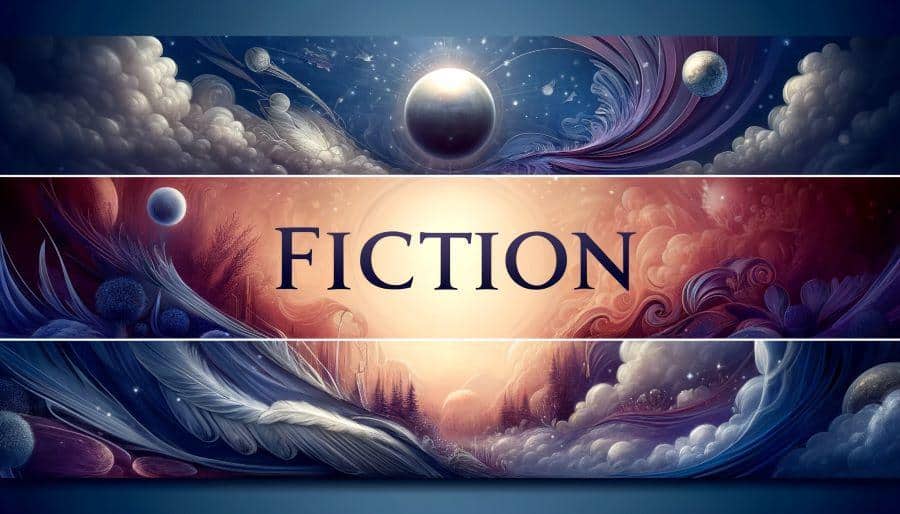Did you know J.K. Rowling sold a staggering 8.3 million copies of “Harry Potter and the Deathly Hallows” on the first day of its release in 2007?
This mind-blowing achievement landed her on the New York Times Best Seller list and cemented her place as a literary icon.
The New York Times Best Seller list isn’t just about prestige; it’s a powerful way to skyrocket your book sales and establish yourself as a major literary voice.
In this guide, we’ll explore strategies for how to become a New York Times bestseller.
What Does It Take to Become a New York Times Bestseller?
Penning a page-turner that hits the New York Times Best Seller list is every writer’s dream, but what does it actually take? There are a few key criteria and factors that determine whether a book becomes a New York Times bestseller.
First and foremost, it comes down to sales. The NYT ranks books based on weekly sales data reported by thousands of booksellers, wholesalers, and independent distributors across the country. The specific sales thresholds vary based on category. For example, the bar is lower for poetry than for mass-market fiction.
However, sales alone don’t guarantee bestseller status. The NYT also considers other “intangible” factors when curating the list, like buzz, momentum, reviews, and timeliness.
A book that sells, for example, 8,000 copies in its first week has a better chance than one that sells the same amount over 3 months. A strong pre-launch buzz, positive reviews, author platform, and cultural relevance can all tip the scales.
The NYT list also tends to favor hardcovers and new releases, so timing the release is key.
How Many Books Do You Need to Sell to Be a NYT Bestseller?

To land on the New York Times Bestseller List, authors typically need to sell somewhere between 5,000 and 10,000 copies of their book in a single week. However, this number can vary based on several factors, such as the genre of the book, the time of year, and the competition from other new releases.
Selling in higher quantities and through a diversified range of retail outlets, including independent bookstores and national chains, can improve your chances of making the list.
Additionally, sales across all formats – hardcover, paperback, and e-books – are considered, so having your book available in multiple formats can also help.
Which Genres and Types Make the Best Seller List?

When it comes to which genres and types of books most often make the New York Times bestseller list, fiction, and more specifically, genre fiction, has a clear advantage.
Fiction dominates the majority of the bestseller lists, especially in the combined print and ebook rankings. The most represented genres are thrillers, romance/erotica, science fiction/fantasy, and general fiction. Nonfiction titles occasionally break into the top spots, but far less frequently than fiction.
Why does genre fiction fare so well? There are a few key factors:
- Built-in fanbase – Popular genres like romance, sci-fi, and mystery have dedicated fans who snap up the latest releases from their favorite authors. The fanbase gives books an automatic boost.
- Series – Many bestselling books are part of a series, which helps authors retain and grow their readership over successive titles. The momentum of an existing series gives later books a leg up.
- Escapism – Genre fiction provides an escape and entertainment that many readers crave. The fun, engaging stories make these books quick, addictive reads.
- Relatability – Genre themes and characters tend to be more accessible and relatable for everyday readers. The books speak directly to their interests and emotions.
- Formula – Genre fiction relies on tried-and-true plot formulas and tropes that work. Readers know what to expect, which adds to the appeal.
Do Publishers Play a Role in Reaching the Best Seller List?
Publishers play a significant role in helping books reach bestseller lists. They have sales teams that can persuade major retailers like Barnes & Noble to order large quantities of a book before it’s even published.
Larger publishers also have the resources to heavily promote certain books through advertising, media appearances, and other marketing efforts. They strategically time the release of hardcover, paperback, and ebook editions to maximize sales.
Publishers leverage their industry connections to get books placed on curated bestseller lists, even if the sales don’t fully support it. Some lists involve editorial discretion, not just pure sales data. They provide authors with the resources to build buzz and drive early sales, which helps a book debut strongly on the charts.
How Can Marketing Boost Your Chances of Becoming a Bestseller?
If you want your book to become a best-seller, you need to market it properly and well. Here are some of the most effective strategies you can use to achieve this:
- Invest in targeted ads: Allocating budget for ads on major book marketing platforms like BookBub and Amazon can get your book in front of engaged readers who are likely to purchase it.
- Run promotions and deals: Participating in deal-site promotions and temporarily discounting or offering free copies of your book during launch periods can create spikes in sales. This can help you hit daily sales thresholds for bestseller lists.
- Build an engaged email list: Email marketing allows you to reach fans directly. Offer exclusive previews, discounts, or other incentives to subscribers leading up to launch.
- Leverage influencer marketing: Securing reviews, endorsements, or promotions from influencers in your genre gives you access to their engaged follower base. An influencer shoutout can lead to a major sales boost.
- Maximize launch week sales: Plan promotions and marketing efforts to drive maximum sales in your book’s first week. Strong debut week sales give you a better chance of hitting a bestseller list out of the gate.
- Optimize metadata and covers: An eye-catching cover and strong metadata like titles, descriptions, and keywords can help your book surface in searches and stand out. This leads to more visibility and sales.
- Run giveaways and contests: Giveaways create buzz and give readers a chance to discover you. Contests like having fans post reviews for a prize also help drive more ratings and reviews.
Can Social Media Influence Your Bestseller Status?
Social media has become an invaluable tool for authors to build their platform, connect with readers, and drive book sales. Platforms like Twitter, Facebook, Instagram, and TikTok all offer ways for writers to organically spread awareness about their books.
Many bestselling authors leverage social media starting months or even years before a book launch to slowly build anticipation. Sharing excerpts, cover reveals, and behind-the-scenes peeks into the writing process all work to get readers excited. Launching pre-order campaigns on social media can also help spike early sales numbers.
During launch week and the critical reporting periods for bestseller lists, authors often blitz social media with posts, takeovers, live videos, and more to drive engagement and sales. Paid ads on platforms like Facebook and BookBub that direct to retailer purchase pages are also commonly used to boost rankings during this crucial time.
Beyond promotions, social media allows authors to interact directly with readers and book clubs. Engaging with reviews, questions, and conversations helps forge lasting connections with fans. Authors can then leverage these communities for word-of-mouth promotion and organic sales growth.
In today’s book market, having an engaged social media presence is essential for any writer hoping to hit the bestseller lists. The more buzz an author can create on social media, the better their chances of hitting those lofty sales numbers.
Are There Best Practices for Launch Timing and Promotion?
When it comes to launching a book and promoting it to reach bestseller status, timing can be everything. Here are some tips on ideal timing:
- Choose the right launch date: Debuting a book at the start or end of the standard workweek allows more time for initial buzz and sales. Weekends, on the other hand, can be slower sales days because there are fewer people online and making purchases.
- Avoid major holidays or busy times: Avoid launching your book during big holidays or when there are lots of other events happening because your book might not get noticed. But also, be careful not to launch during very quiet times when there isn’t much going on, as your book could get overlooked then, too.
- Plan around reporting periods: Since many lists track weekly sales, launching near the start of a reporting period gives you a full week of sales to be counted.
- Build momentum leading up to launch: Start amping up marketing and advertising 6 months before launch day to build awareness. Deals and promos in the final few weeks can really help drive early sales.
- Maximize launch week promotions: Having multiple promos, ads, author events, etc all coincide in your launch week is key to driving the sales, reviews, and algorithm boosts needed to push you up the charts.
- Sustain momentum after launch: Don’t let promotions dry up after launch week. Keep advertising and looking for deals in the following weeks when sales and rankings start to taper off. Momentum is hard to regain.
- Plan long-term promotions: Use promotions on deal sites and planned ad campaigns in later months to spur sales spikes and keep rising on bestseller lists. Think marathon, not sprint.
Final Thoughts on How to Become a NYT Best Seller
Becoming a New York Times bestselling author is an incredible achievement that takes persistence, strategy, and a little bit of luck. The prestige associated with making the list can transform your career and open up new opportunities.
But remember, the heart of achieving bestseller status lies in captivating your readers. Write a book that ignites their imagination, solves a problem they care about, or offers a fresh perspective. When your story resonates, success becomes a natural consequence.
To ensure your manuscript shines, consider utilizing our online text editing tools. They’ll help polish your prose and make your story the best it can be.
SOURCES
At Voxtury, we prioritize using high-quality sources, including peer-reviewed studies, to ensure our articles are accurate, reliable, and trustworthy. To learn more about our commitment to quality and how we fact-check our content, please visit our editorial process page.
- Written Word – Reaching the Bestseller List: A Guide for Self-Published Authors
- Publihdirve – What Makes a Book a Bestseller: Insights from Top Lists
- Self-publisning School – Book Launch: 12 Day Timeline, Tactics, & Strategic Guide
- BookBaby – Book Launch Ideas for a Successful Event
- Jane Friedman – How Do Books Become Bestsellers?
- BookBub – How Successful Authors Use Social Media: 29 Content Ideas
